
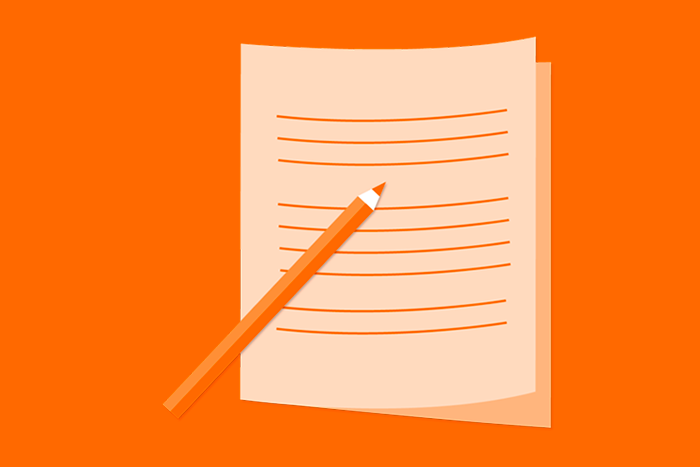
Viewpoints
Viewpoints is a blog in which different writers express their views and opinions on current topics. A new blog post is published about once every four weeks.
You can propose texts by e-mail to viestinta@kesko.fi. The maximum text length is 2,000 characters.
Helena Dahlbo, SYKE: Better recycling helps mitigate the problems with plastics
Oceans full of plastics, shoreline waste, microfibres from washing fleece garments. These are topics most of us will have come across recently. Plastics are pointed out as the main culprit, something to be urgently eliminated. But is it really the materials that are at fault? And what can we do? Promising solutions include cutting down on the use of plastics, replacing them with other materials, and increasing the recycling rate of plastics.
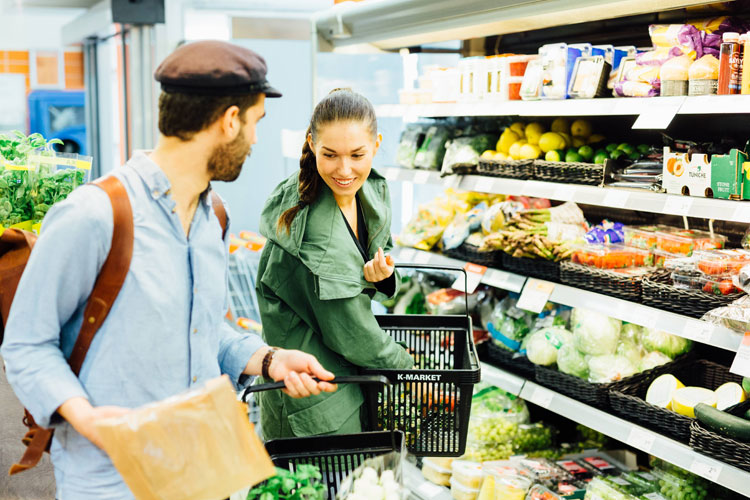
Plastics are widely used in societies like ours, and for good reason. They’re extremely versatile – lightweight, stretchable, rigid, tight, and even breathable if necessary. Because packaging accounts for the vast majority of plastics use, packaging also creates the largest plastic waste streams. Both bio-based and biodegradable materials have been developed to replace plastics in packaging, for example to reduce the accumulation of rubbish on land and waterways. So far, however, there isn’t enough knowledge of the overall impact of these alternative materials on the environment. Biodegradability is tested under conditions that are not found naturally, so these materials might not necessarily turn out to be good alternatives to plastics.
The problems caused by plastics are mainly due to the fact that we don’t control their use or material cycle. We all need to play our part in closing the plastic cycle. Collection of domestic plastic packaging began in Finland in 2017, and there is a demand for separately collected and sorted recycled raw materials. Nevertheless, there’s still much to be done when it comes to sorting, both by consumers and by organisers of plastic collections.
The range of plastic products is very broad, so the types of applications for recycled plastics are also highly varied. Research in this area is being carried out in many quarters, among them the CIRCWASTE project. All plastics may not be suitable for recycling due to substances that have been added to them in production, such as flame retardants or plasticisers. These create the desired properties in the plastic product, but in wrong applications they can even cause problems to human health. Since it is hard for consumers to know what different types of plastics contain, the processing of plastics waste is best left to professionals working in conditions where health hazards can be controlled.
There are still many questions about the management of plastic cycles that can only be answered by continued research and development. Product designers play a key role in developing methods of managing plastic flows. Products need to be designed to be durable, repairable and recyclable. Producers that are responsible for collection of packaging have to develop and expand their collection operations so that plastic packaging can be recovered and recycled more extensively than at present. Us consumers can make a difference through our individual choices: we can buy products with care and only as needed, and we can buy durable and reparable items instead of disposable ones.
Senior research scientist Helena Dahlbo
Finnish Environment Institute (SYKE)
Susanna Huittinen: “Sustainability is also a desire to make a difference” – K Trainee’s thoughts on corporate responsibility
In our personal lives, acting responsibly means small things, like wearing a bicycle helmet, checking your fire detector works, and buying local vegetables when they are in season. From a corporate perspective, however, I think responsibility is much more than warning labels and safety vests. For companies, responsibility and sustainability are above all else a strong value-driven choice to be an active member of society. This also means choosing to take part in creating welfare in all areas where the company’s operations have an impact.
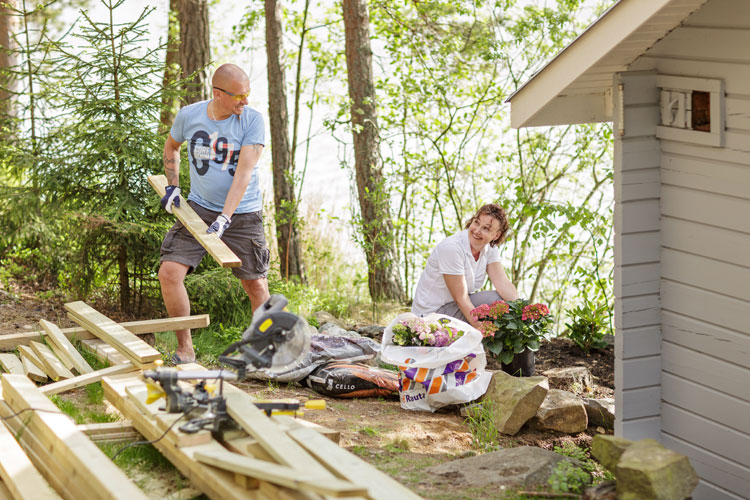
In a company like K Group, sustainability means placing the customer at the centre of operations, and offering the customer a wide selection of safe, high-quality products and services that are sustainably produced.
Because no company can operate separate from the rest of the society, for K Group acting sustainable also means actively engaging in public discussion and bringing to light areas for improvement. In K Group’s building and technical trade, for example, this means actively promoting improvements to construction productivity, focusing on product safety to ensure safe future living conditions, and working together with the WWF in the Fishpaths project. Those who can make a difference, should want to make a difference.
Those who bravely set an example not only encourage others but also have the best chances of establishing new sustainable ways of doing business. In a company that places sustainable business practices at the core of its strategy, new business models are seen as an opportunity to improve customer experience and build trust between the company and the customer. If a company’s strategy is not tied to sustainable business practices, responsible operations of the company will only touch the surface and sustainable business practices will be viewed as costs rather than as something that creates value for the company and especially for the customer. In best cases, sustainable business practices tied to corporate strategy lead to innovative business models and happy customers who keep coming back.
A company is made up of its employees, and each employee is an ambassador for the company. What we each do every day, matters. When you work for a company that has made a value-driven commitment to sustainability in its strategy, it is easy to take action, come up with ideas and implement them. In the end, everyday responsibility means turning off the office lights, greeting other people, auditing factories, ensuring product safety, choosing the vegetarian option at lunch, cycling to work and many other such small contributions.
Susanna Huittinen
K Trainee, Building and technical trade, K Group
Suvi Halttula, Plan: Let’s make invisible girls visible
20 November is the United Nations’ Universal Children’s Day, celebrated to increase awareness of children’s status and the importance of children's welfare across the world. We at the children’s rights organisation Plan want to shine the spotlight on girls in particular.
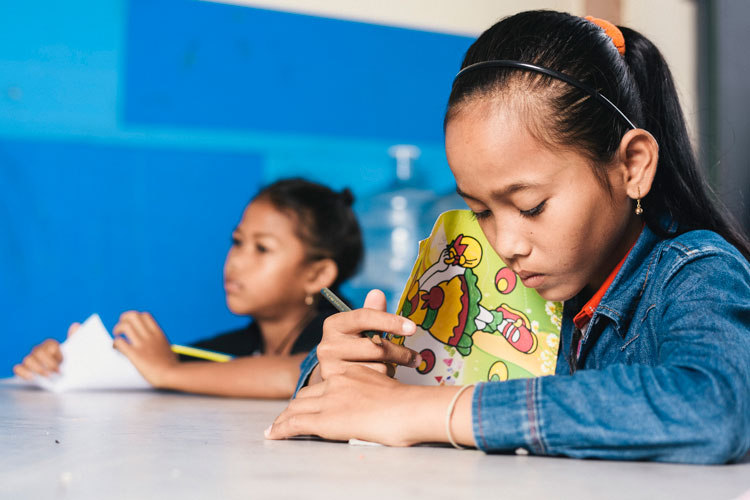
All children, regardless of place, age, race, ethnicity or gender, should have equal opportunities for a good and safe life and a future. However, girls are at a disadvantage when it comes to opportunities and exercising their rights. Girls are more likely to suffer from malnutrition, drop out of school, encounter violence, be forced into early marriage or be victims of child trafficking. In large crowds of immigrants or refugees, girls tend to be the most vulnerable of all people, especially if they get separated from their parents or family. One reason for all this is the fact that girls are invisible: they are not acknowledged as a separate group.
Unfortunately, girls are often invisible also when it comes to international statistics. If we want to achieve real, sustainable improvements for girls, statistics must reflect their unique circumstances. Plan has joined forces with eight other parties to form the Equal Measures 2030 partnership, which wants to make every girl and woman in the world visible, also in statistics. By combining collected data and experience and using them as a tool for influencing and action, the partnership strives to ensure that we can meet Sustainable Development Goal 5 (gender equality) by year 2030.
We are very happy to be currently working together with Kesko in Thailand as part of a larger program, which has led to improvements in the status, social safety nets and education opportunities of Cambodian migrants and their families. We have also enforced sustainability and human rights awareness among fishing industry suppliers in Thailand. Girls and young women have been a key focus area for us also in this project, as we want to make sure they will not be invisible. The collaboration is a good example of how companies can take extra steps in their operations and sustainability work to take those who are the most vulnerable into account when planning and evaluating their activities.
Suvi Halttula, Senior Corporate Partnership Manager, Plan International Finland
Matti Kalervo: For sustainable fish populations
Soon we will put rubber boots on our feet and our hands in clay and together with the wildlife conservation organization WWF we will wade into rivers to conserve Finland's endangered migratory fish populations.
As part of our extensive and multi-year cooperation with WWF, Kesko is helping to map Finland’s rivers, streams and brooks to find the barriers that prevent fish returning to their spawning grounds. Then, landowners, local K-retailers and volunteers will work together in a spirit of cooperation to remove those barriers. Our aim is also to raise awareness about Finland’s endangered migratory fish populations. Fish may not be cuddly or collect sympathy points, but the truth is that all of Finland’s migratory fish are endangered. The sea trout is even more endangered than the Saima ringed seal.
The cooperation continues our long-term work to safeguard sustainable fish stocks. We comply with the recommendations of WWF's Seafood Guide and you will not find endangered species marked with a red traffic light sign on our shelves. And, our own Fish and Shellfish Statement will turn ten this year.
As an active societal actor, we have made a strong stand on the issue of fisheries. A few years ago, the fish soup boiled over when we strictly kept to the recommendations of the WWF's Seafood Guide, which led to direct disruption in the market. The WWF had placed Finland’s Atlantic Salmon on the endangered list and we appreciated that it was made off-limits. When we removed the endangered species from our range, people even began to talk about the market disruption we initiated.
The Ministry of Agriculture and Forestry convened a national strategy work group for salmon and sea trout, which we have been in from the beginning. The group reached consensus on large-scale measures and Finland’s Atlantic salmon population began to recover so promisingly that the WWF could move it off the red list and onto its yellow list.
Modern consumers are becoming more aware and we want to help them make sustainable choices. In the spring, we introduced the Pirkka fish patty to our stores, which has quickly gained great popularity. The raw material of the Pirkka fish patty is bream, which is caught by using the sustainable fishing methods of the John Nurminen Foundation. In K-Citymarkets and K-Supermarkets you will find Benella rainbow trout for sale; the environmental aspects of this species are strongly taken into account in their breeding. K-retailers are also involved in considerable cooperation with local fishermen and, far from Finland, our cooperation with Plan International will continue working on responsibility issues in the Thai fishing industry and improving the status of migrant workers.
Putting on rubber boots and grabbing a spade is a logical continuation of our long-term commitment to working with one of the world's most respected environmental organisations. We take care to ensure that customers can shop in K-stores with a good conscience, but as the world’s most sustainable trading sector company, it is obvious we need to extend our reach far beyond the walls of our stores.
Important voluntary work to open spawning grounds has already progressed far in Finland. Now we want to invite the whole country to talk about saving our migratory fish. These work groups will need all the help they can get. Please read more about migratory fish or even sign up to a work group at: http://kesko.fi/kalapolut.
Matti Kalervo
Vice President, Corporate Responsibility
Anna Salminen: The successful monitoring of the age limit for alcohol
The issue of the selling of alcohol was a subject of much lively debate during spring. In connection with that, retail stores’ successful monitoring of the age limit for purchasing alcohol has also been actively discussed. And that is good, as the monitoring of the age limit for purchasing alcohol is robust. Sadly, when young people actually do manage to acquire alcohol, it is often bought for them by an adult.
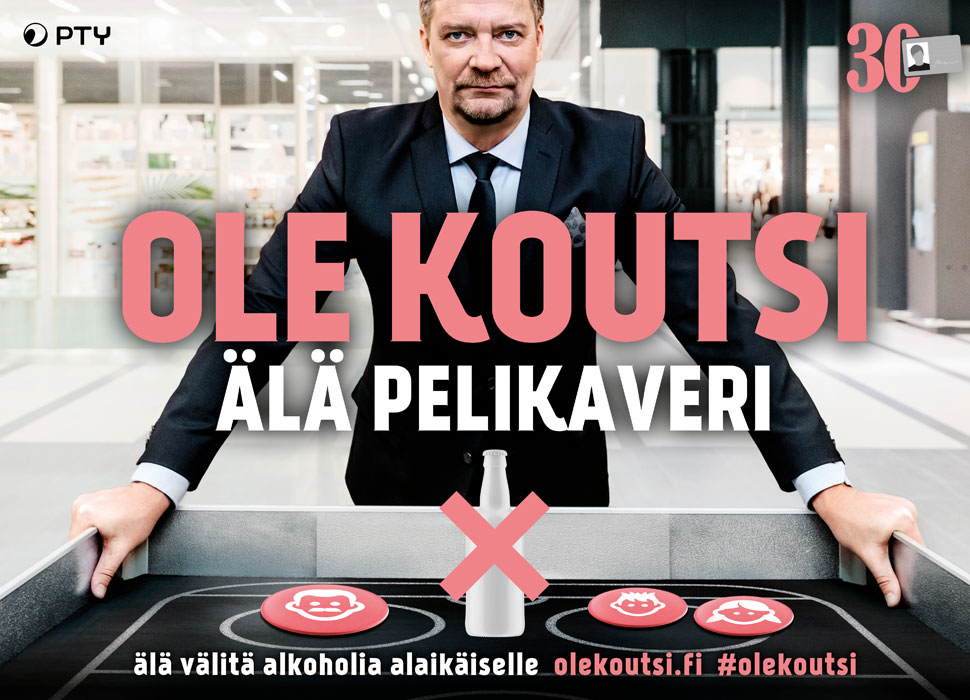
According to The National Institute for Health and Welfare’s research Nuorten päihteiden käyttö Suomessa 1995–2015 [Alcohol and Drug Use among Adolescents in Finland 1995–2015. ESPAD survey results], 37% of young people said they obtained their alcoholic drinks from their friends and siblings. In addition, their parents as well as adult strangers also buy alcohol for young people. In fact, roughly 60% of the time when youths drink alcohol, it has been obtained for them by siblings, friends, parents or strangers over the age of 18.
Currently, only 1% of young people buy their alcohol directly from a store and it is increasingly rare for minors to even attempt to buy alcohol for themselves from a store. That extremely low percentage is due to the efforts of shop cashiers as well as clear communication and messages to customers, consequently youths know more than before about the rules for age limit monitoring.
Stores invest a great deal in ensuring that age limits are monitored in effective ways, furthermore, self-monitoring is also being constantly enhanced. For example, an age limit test, which over 120,000 cashiers have now passed, has been created to assist the training of store staff. With the help of staff training the reference age for alcohol and tobacco products was also increased from 23 to 30 years in 2013. By raising the reference age limit, the threshold for staff checking the age of customers was lowered. Thus, the more that adults are asked to prove their age, the lower is the amount of alcohol that falls into the hands of minors. The reform has been successful and nearly 70% of Finns believe that stores have been successful in their age limit monitoring (Suomi Syö 2016). Cashier workers also consider the higher age reference a good tool.
But what else can stores do to prevent minors from acquiring alcohol? Cashiers are trained on a regular basis, giving them the confidence and competence to be able to ask for proof of age. In addition, stores can join in the campaign: Be a coach, not be a player. The campaign began in March 2017 in almost all grocery stores and kiosks throughout Finland and features the successful Finnish ice-hockey coach Jukka Jalonen teaching adults to say “NO!” to buying alcohol for youths. It was this campaign that awoke in youths, parents and other adults the discussion and realisation that alcohol endangers the health and safety of young people and that distributing alcohol to minors is a crime. The campaign material can be seen at www.olekoutsi.fi.
Retail stores are committed to monitoring the age limit for alcohol and strongly increasing their effectiveness with regard to that. It has been a great pleasure to see that staff and customers have reacted positively to this development.
Anna Salminen, Food Specialist, PTY Communications Group Chairperson
Hanna Lehtisalo: Good for me, good for others
Treating oneself is an important part of well-being and even when living a disciplined lifestyle it is usually possible to find the time enjoy a treat. Savouring the moment is something to be taken seriously and should enjoyed properly. The motto of many people seems to be: when treating oneself, you should really treat oneself. And the best moments come when we know that we are not just treating ourselves but benefitting others as well.
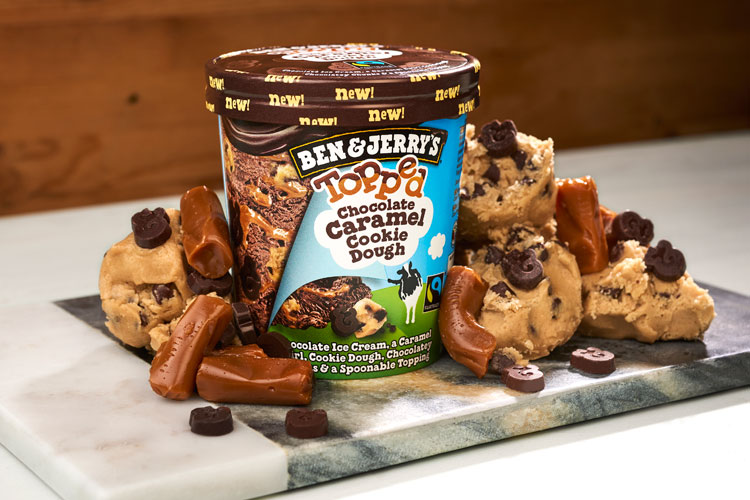
For these special moments we often choose rich, high-quality products and our enjoyment is total: all the senses are indulged. A treat is at its best when we breathe in the scent, feast on it with our eyes, take a photo or two and then enjoy the taste – either familiar and heartening or a new and attractive confection.
But is that enough? Can we fully immerse ourselves in the velvetiness of the chocolate or the softness of vanilla ice cream if we do not know the origin of the ingredients? What significance has the route taken by the delicacy, before it arrives on our coffee table, had for all the people who have participated in its journey?
The journey of the products that we put in our shopping baskets increasingly interests us. For instance, the value of buying Fairtrade products increased by 9.5% in Finland last year, demonstrating that a product’s origin does matter to us. High-quality increasingly means not only quality raw ingredients, like vanilla or cocoa beans, but also the quality of life of the farmers who grow our food, thus the brownie on our spoon will taste all the sweeter if we know that its baker may have found her first ever job confecting it.
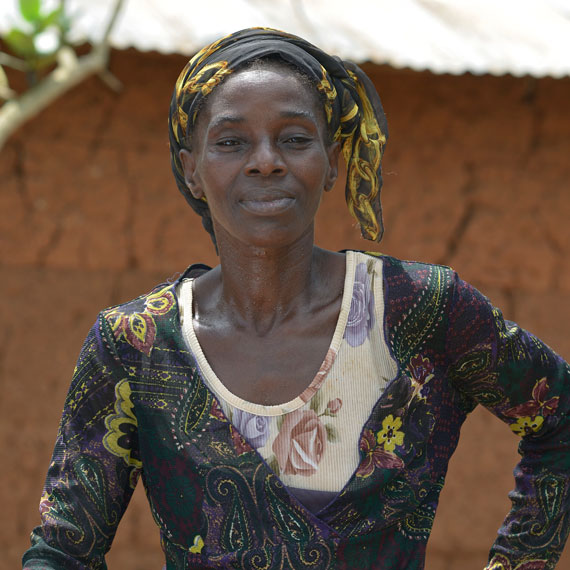
Emma Georgette of the ECOOKIM co-operative. ECOOKIM is a union of seven primary co-operatives located in rural communities across four regions of the Ivory Coast. Ben & Jerry’s purchases cocoa and other ingredients for its ice cream from ECOOKIM’s farmers.
More and more of us want to choose products that have been ethically made and respect people, animals and the environment – to help us make choices there are different ethical certifications. The Fairtrade label indicates that raw material growers, like Emma Georgette from the EKOOKIM co-operative, have received fair prices and the Fairtrade premium for their products, which will help further the social and economic development of their community.
In the future, the fact that the highest quality delicacies we choose will also benefit others will no longer complete our moments of indulgence – it will even become a prerequisite for their success.
Hanna Lehtisalo, Product manager
Ben & Jerry's, Unilever Finland Oy
www.benjerry.fi, @benjerrysuomi
Seija Kurunmäki: What does the national food poll reveal about us?
Finland’s national food was selected in a public poll at the beginning of 2017. The winner was dark rye bread. The goal of the national food poll was to increase the Finnish nation’s understanding of its own culinary culture. An awareness of one's culture increases the appreciation of food and creates interest in the special characteristics of other cultures.
In summer 2016, Finns were asked to name their favourite foods, and a list of thousands of foodstuffs and dishes was created based on the responses. Some of the candidates were local specialities, such as the blood sausage; blood pudding and potato stew; blood pancake; ‘kalakukko’ – a fish pastry; blood and barley dumpling soup; pan-fried sausage and eggs with liver casserole; and bone broth and wheat dumpling soup, as well as other hearty exotics.
In the public poll, the most popular foods were traditional Finnish dishes that are still well-liked today: Karelian stew, pea soup, dark rye bread, Easter pudding, salmon soup, and fried Finnish fish. Pork gravy and reindeer stew were also favourites among many people.
As the poll sought to find a ‘national food’, many respondents suggested traditional foods. The most popular Finnish home-made dishes ranked surprisingly low: minced beef sauce, pasta casserole, lasagne, sausage, and oven-baked salmon. Pizza, kebab, and hot dogs were voted for by people who wanted to go against the ethos of traditional foods.
When picking the 12 finalists from among the most popular foods, the expert jury focused on dishes which are still prepared today. Of the contemporary favourites, pizza fits the Finnish tradition of pies, which is why the jury also included it in the final list.
But a minor media storm broke out once the finalists were announced. Some people were disappointed that their favourites were not included. Seeing pizza among the finalists also enraged some culinary enthusiasts. Some discussion threads criticised the fact that a major portion of the foods listed are products of the modern food industry.
Dark rye bread received 25% of the votes. Like the Karelian pasty, it was especially popular with people under 30 years of age. Among respondents over 60 years of age, Karelian stew and fried whitefish or herring with mashed potatoes were the most popular foods. To the relief of many people, pizza received less than 1,000 votes. Blueberry pie was the most popular dessert among people of all ages. The jury’s favourite was fish soup, which suits all seasons and is always a good match with dark rye bread.
Since the poll, the discussion on Finnish food specialities has increased and the iconic status of dark rye bread has grown. Our national self-esteem and understanding have also improved somewhat. Many provinces have resurrected their own local specialities. Dark rye bread, Karelian pasties and Easter pudding are being prepared with gusto at home as well. The selection of a national food will inspire people to have meals together and talk about food.
Seija Kurunmäki
Managing Director
ELO – Foundation for the Promotion of Finnish Food Culture
The poll took place between 1 October and 6 December 2016. The total number of votes cast was 38,500.
Outi Uusitalo: Could virtues be the foundation of sustainability?
Today, sustainability is a routine element of the operations of many companies. What promises then are made to stakeholders by individuals and companies who present themselves as responsible? Sustainability can mean many different things: renewable energy, taking care of employees, recycling, local activities, ensuring good quality. Could it be possible to base sustainability on virtues so that it would be more than just compliance with technical standards? Virtues are character traits, which are ethically and morally valuable. How would the four cardinal virtues of ancient Greece – prudence, temperance, fortitude, and justice – fit in the development of sustainablity?
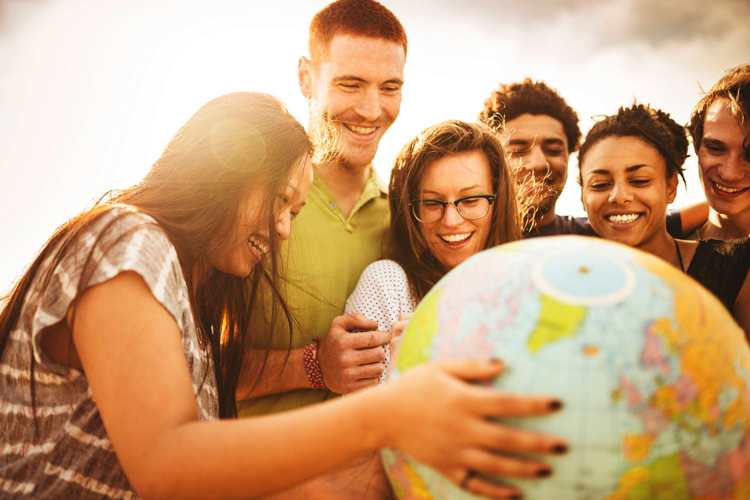
The virtue of prudence means reflection, consideration and rationality. We talk about common sense – something that stems from life experiences and can be identified by listening to and talking with different kinds of people. Prudence (wisdom) is renewable; it is practical information arising from the daily activities of customers; it is all around us and should not be left unharnessed. The virtue of justice means sincerity, impartiality and fairness. It creates a foundation for mutual trust between people and organisations. Fortitude means steadfastness, the courage to take risks and persevere in pursuit of one’s goals. It reinforces sustainability and promotes the adoption of new, sustainable practices, and also strengthens one’s faith in the desired outcome and helps tolerate setbacks in the event of delayed results. Temperance refers to one’s ability to be moderate and humble, set limits and, if needed, refuse. It can guide us to conserve natural resources, avoid over-eating and splurging, and help us to consume in moderation and keep household finances balanced.
Responsible operations, innovations, products or services based on these virtues will stand out from the competition and create value for customers. Customers deserve to be treated with respect. That is why using the virtues as our guideline could be a point of honour for all of us. At the same time, it would enable us to build a better world for everyone.
Outi Uusitalo
Professor
University of Jyväskylä
Niki Alanko: An unscented product is a responsible choice
Consumers are becoming more and more interested in knowing what chemicals go into products. Many people consider themselves fragrance sensitive and may suffer from symptoms caused by a variety of scents and odours. As a result, unscented products are gaining popularity. Factors that also have a powerful impact on purchase decisions include trends and, for example, sensation-driven stories, which spread via social media, about chemicals. Fragrance sensitivity is more common in women than in men. Mild symptoms caused by fragrances include headaches or nausea. The cause of fragrance sensitivity is not yet known. More research is needed before it can be assessed whether women are more sensitive to fragrances than men due to their daily and prolonged exposure to chemicals. Cosmetics, perfumes, detergents, cleaning agents... The list of substances causing fragrance sensitivity is extensive.
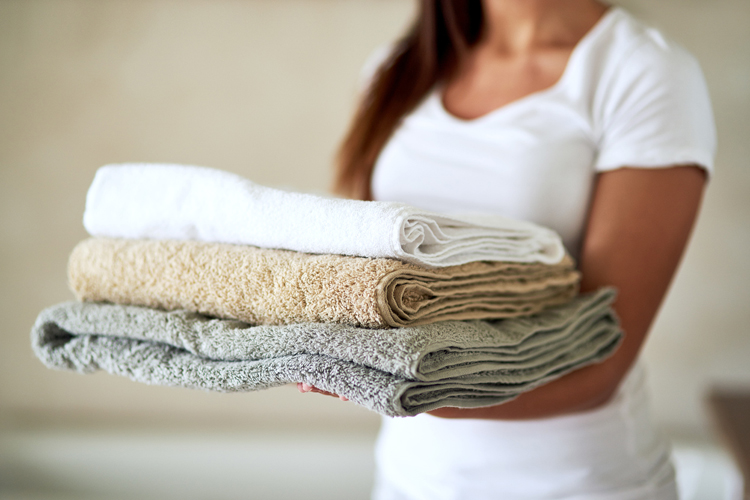
The Allergy and Asthma Federation has been awarding the Allergy Label to allergen-free products for more than 20 years. Since the very beginning, a product being unscented has been one of the criteria for receiving the label. The inherent scents of the ingredients may not be covered up with even minuscule quantities of odorant chemicals. Therefore, manufacturers are required to do research to ensure that their consumer products are truly unscented.

At home, it is worthwhile considering whether household products need to be scented at all. In families with children, unscented cleaning agents are a responsible choice, because the floor is usually where the children play. Also, is it really necessary to use scented dishwashing agents? The dishes do not need it, nor does the dishwasher. Chemicals come into contact with our sensory channels, but they also touch our skin and end up in the environment via wastewater.
By choosing unscented products, everyone can impact not only one’s own fragrance load but also the well-being of others. Using powerful fragrances is no longer so fashionable, instead, it is seen as inconsiderate to others. Not all fragrances need to be eliminated from one’s life, but being a responsible consumer also improves the well-being of others and the environment.
Niki Alanko, Communication Services Director, Allergy Label
Allergy and Asthma Federation
Arttur Kulvik: It is worth taking responsibility
Responsibility and energy efficiency have become buzz-words in the media and among decision-makers and companies. Consumers are business customers have begun to demand that product manufacturers and retailers behave responsibly. Companies have concluded energy-efficiency agreements committing themselves to targets that require operational development and considerable investment. But what does all this mean in practice? What has changed?
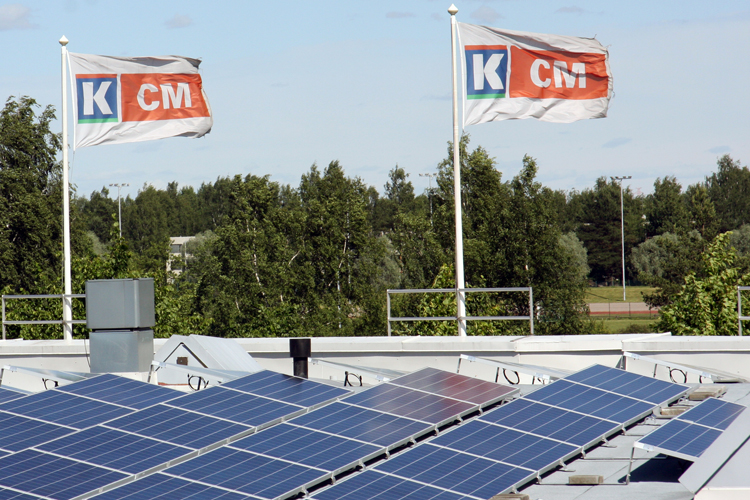
There is a very simple answer to this: corporate responsibility has become a profitable business that benefits all parties. Energy efficiency, emissions reductions and financial profitability go hand in hand. Technological developments have allowed the profitability of the required investments to reach a level that satisfies capital investors. Financial profitability has accelerated the realisation of investments while increasing the scale of projects.
Pioneers like Kesko have realised that the investments required to reach targets actually offer good returns. The experiences gained from these investments have been positive, encouraging large-scale deployment of the solutions. A good example of this is K-Group's investment in solar power plants at K-Citymarket and K-Supermarket food stores.
By summer, K-Group will have commissioned the construction of 16 solar power plants with a total power output of 4.3 MWp. The power plants generate 3.6 GWh of electricity annually, which corresponds to the energy consumption of 180 detached homes with electric heating. The constructed power plants include Finland's largest 900 kWp solar power stations on the roofs of K-Citymarket Länsikeskus and K-Citymarket Kupittaa. The solar power plants will generate electricity affordably for the property's own consumption for more than 30 years.
In one year, Kesko has become Finland's largest generator and user of solar energy, setting an example for other companies. Solar power plant projects are just one example of Kesko's investments in responsible business. Indeed, Kesko is one of the most sustainable trading sector companies in the world. Corporate responsibility has become a source of competitive advantage, and the measures required to realise it are financially profitable investments.
Corporate responsibility is no longer just a trend; it has become a permanent operating model.
Arttur Kulvik
Chair of the Board of Directors
Solnet Green Energy Oy
www.solnet.fi